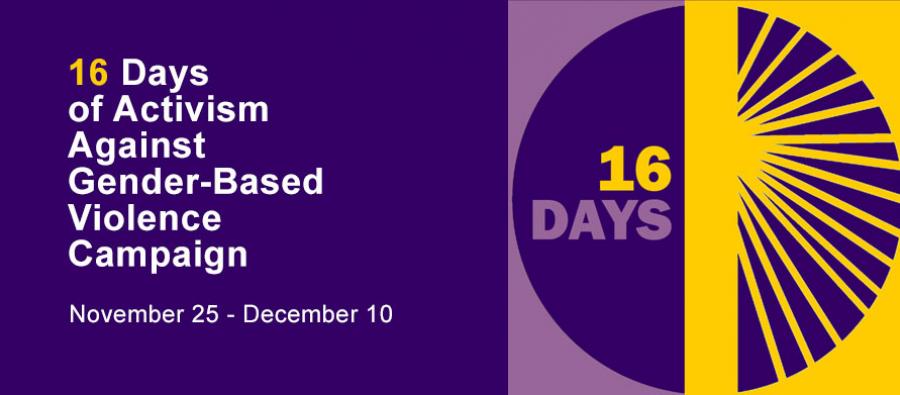Did you know that today marks the start of 16 Days of Activism against gender-based violence?
Gender inequality and gender-based violence is a big problem in Australia and has an ongoing impact on individuals, families and community wellbeing. That is why, for 16 days our Leadership Team are pledging to do more to end it.
I want our organisation to speak out against violence and support those experiencing it. There are many ways we are doing this through our medical, counselling and support services – but I also wanted to ensure that we were living out these values every day.
I pledged to talk to the men in my life about how violence against women is also a men’s issue. But first, I am talking to you! Because talking about the issue is an important first step in building understanding.
Did you know?
- Gender-based violence is any form of violence primarily experienced by someone of a specific gender. It is also often called violence against women, as it is mainly women and girls who experience it.
- It includes any kind of physical, sexual, emotional, psychological and financial abuse.
- One in three women have experienced physical and/or sexual violence by someone they know.
- One woman is killed every week by a current or former partner.
The ongoing trauma can impact on someone’s health and wellbeing for a long time. However, this issue doesn’t just affect women.
It has a big impact on children who see or experience it. It impacts their mental health and can put them in physical danger too. Violence against women is the leading cause of homelessness for women and children.
It also has a longer-term negative impact. We know that children will often mimic their parent’s behaviour and they learn from them at a young age. Witnessing violence and abuse of women can make children believe that it is right for women to be treated that way.
This means young girls and boys may unconsciously become accepting of that kind of treatment – which means the cycle will continue.
But together, we can stop it. We can all pledge to make a difference.
We can:
Learn
- Relearn global history and research ‘women who changed the world’
- Learn what victim-blaming is and how to recognise it
- Learn what patriarchy is and practice explaining it to someone else
- Learn about gender, power and sexual consent
Educate
- Don’t laugh at sexist jokes or comments and speak up against them if you can
- Explore why we have a gender pay gap and talk with others about it at work
- Learn to recognise gender stereotypes in the media and talk with others about it
- Encourage the children in your life to play with any toy they like, regardless of gender stereotypes
Communicate
- Encourage the men in your life to talk to each other their feelings and emotions
- Recognise how violence against women is also a men’s issue, and discuss this with the men in your life
- Talk to a man in your life about the pressures of being a ‘real man’ and how it impacts on relationships with others
- Shift the conversation from what she looks like, to who she is and what she has achieved
Challenge
- Reflect on the division of labour in your household: Is it fair?
- Don’t fund sexism: Don’t buy media or products that portray women in a degrading or violent manner
- Call it out when a woman is interrupted or spoken over
- Advocate against violence and gender inequality by spreading awareness on your social media and beyond
What will you do?
Keep following our news updates to see what else our Leadership Team did to end gender based violence.
